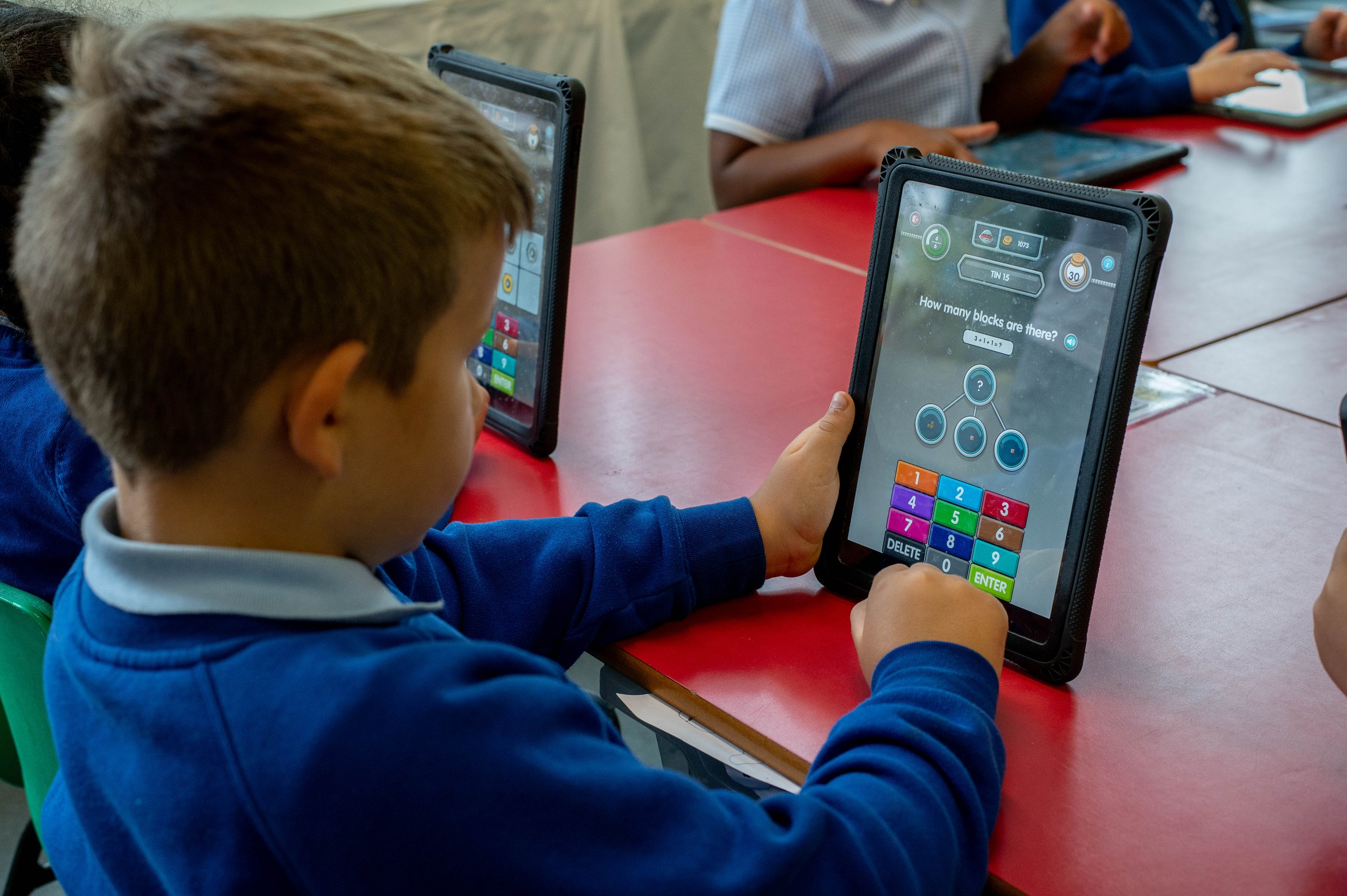
Computing
Computing
at St Anne’s Primary School
Intent – Why does our Computing curriculum look like this?
At St Anne’s Catholic Primary, we know that computing and digital technology is going to play a pivotal role in our children’s lives and as a result we aim to develop ‘thinkers of the future’. We aim for our children to be digital creators rather than just consumers when using technology and to equip them to navigate the rapid and extraordinary changes taking place in digital technology effectively and safely.
Our curriculum, encompassing computer science, information technology, digital literacy and online safety, is progressive, ambitious and carefully sequenced. Children know that they need to face and overcome challenge in computing lessons; they accept that they will fail, will need to persevere and develop skills as logical, computational thinkers. We offer children access to a wide range of software, platforms and devices to help them, using technology as a tool for both creativity and learning. We want our children to be active participants in the digital world, whilst ensuring they are respectful, responsible and confident users; children will constantly be made aware of measures they can take to keep themselves, and others, safe online. As a school we utilise technology (including social media) to model positive use; we recognise that the most effective prevention for issues regarding technology is education. Our curriculum is knowledge rich but also provides the children chance to apply their computing skills which will, in turn, allow children the opportunity to become budding computer scientists. This is supported by our Computing SLA Hi-Impact
Implementation – How will we achieve this?
Our children follow a carefully structured Computing curriculum which has been designed to ensure children know more, do more and remember more as they progress through our school. Our content is supported by advice, requirements and guidelines presented in the National Curriculum and the Teach Computing scheme built by The NCCE (The National Centre for Computing Education).
Our Teaching Approach
Computing is taught weekly or in blocks of lessons to ensure children have opportunities for a sustained period of study and have time to embed and enhance their learning. Detailed medium-term planning supports teaching, ensures continuity and carefully plans for progression and depth. Children have opportunities to use high quality resources and materials to support their learning. The medium -term planning also underpins an appropriate teaching pedagogy for effective quality first teaching in computing.
1. Unplug and Unpack – Teach new concepts first by unpacking complex terms and ideas in unplugged and familiar contexts. In these sessions, when appropriate, teachers should support children in the acquisition of knowledge through the use of key concepts, terms and vocabulary. Experiences in this stage should be hands-on and provide tactile and sensory experiences to enhance learning. Regular recall and revision of vocabulary should be incorporated into all sessions once learned. Units begin by exploring declarative or conceptual knowledge.
· Repack – Repack new understanding back into the original concept- linked to the computing lesson. This approach (semantic waves) can help children develop a secure understanding of complex concepts. Units are enhanced by exploring declarative or conceptual knowledge.
· Tinker/Edit/Model – Teachers encourage collaboration in the classroom; this is the shared experience in which children are encouraged to discover for themselves, paired with worked examples and modelling/scaffolding for those who need it. In this session, formative assessment is used to identify where to support, model or challenge. Activities/tasks range from highly structured to exploratory. Adapting instruction to achieve different objectives will help to keep children engaged whilst encouraging greater independence and success for all. In this step children are finding or being shown the procedural knowledge that they need.
· Exploratory Tasks/Projects – Threaded within the curriculum are a range of exploratory tasks and projects which encourage children to apply their learning in a range of contexts whilst making connections with other learning experiences. It also provides children with the opportunity to apply and consolidate their knowledge and understanding. Projects should demonstrate how learning can be transferred into real life scenarios.
All units are taught in conjunction with the Education For A Connected World document and resources to support the teaching of these objectives and expectations can be found at https://projectevolve.co.uk/. The objectives taken from this are threaded throughout our curriculum and regularly revisited and built upon further.
Our computing curriculum is inclusive for all children; each lesson is sequenced so that it builds on the learning from the previous session. Where appropriate, activities are scaffolded so that all children can succeed, children may be provided with extra resources and support, such as visual prompts, so that they can reach the same learning points as the rest of the class. At times, Explorer tasks are incorporated into sessions which are a more open ended extension task for more-skilled learners.
Our children understand the core skills needed to learn in Computing with the use of the school curriculum character – Clara the Computer Whizz. This character is regularly used to encourage the children to reflect on the key skills needed when working with in Computing.
Full details of our curriculum long term schemes of learning and curriculum pathways can be downloaded below.
Impact: How will we know that our children are achieving?
By the end of each key stage, children are expected to know, apply and understand the skills and techniques specified in the Computing curriculum plan.
Children are assessed using our BALANCE tracking system which identifies clear and progressive end points. This ensures progress is maintained and end of key stage expectations are met by all children. Children are assessed termly and a final summative assessment made at the end of the academic year. Children will be assessed as either Emerging, Developing, Secure or Exceeding, in accordance with Age Related Expectations.
In addition, we measure the impact of our curriculum through the following methods:
· A reflection on standards achieved against the planned outcomes;
· A celebration of learning for each term which demonstrates progression across the school (Curriculum Floor book);
· Pupil discussions about their learning (Pupil Voice);
· The annual tracking of standards across the curriculum. In KS1 and KS2



